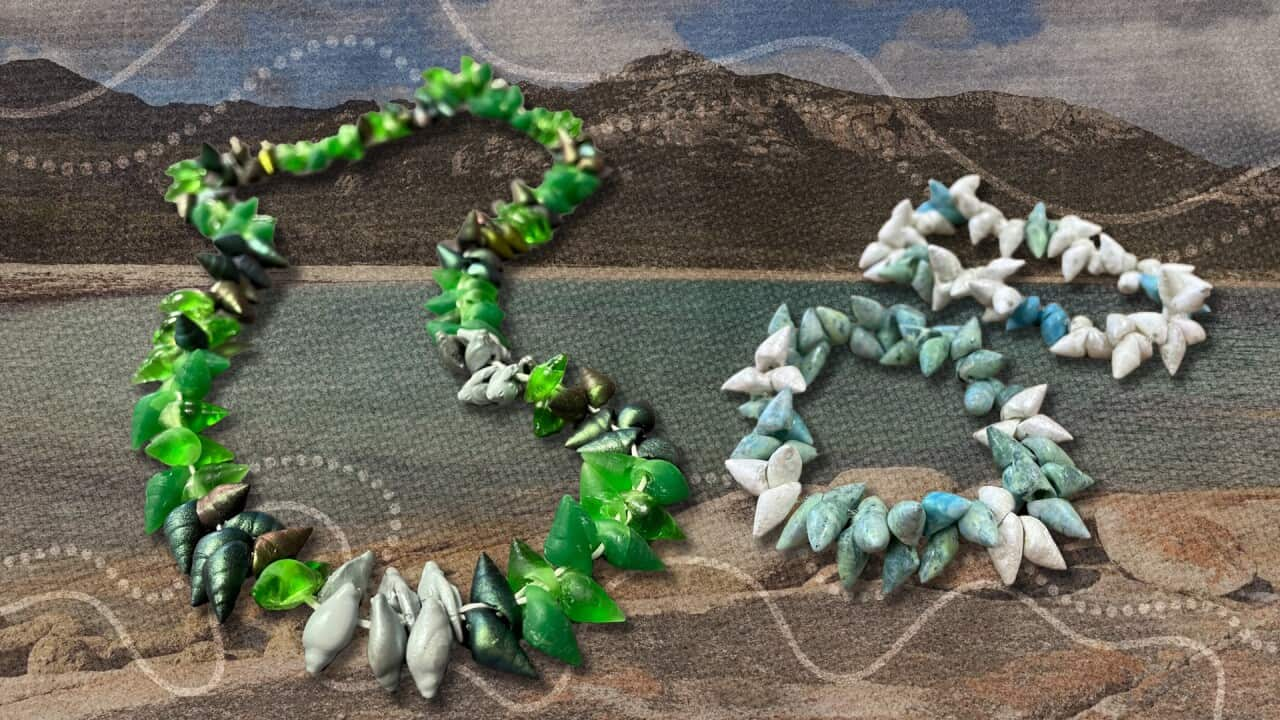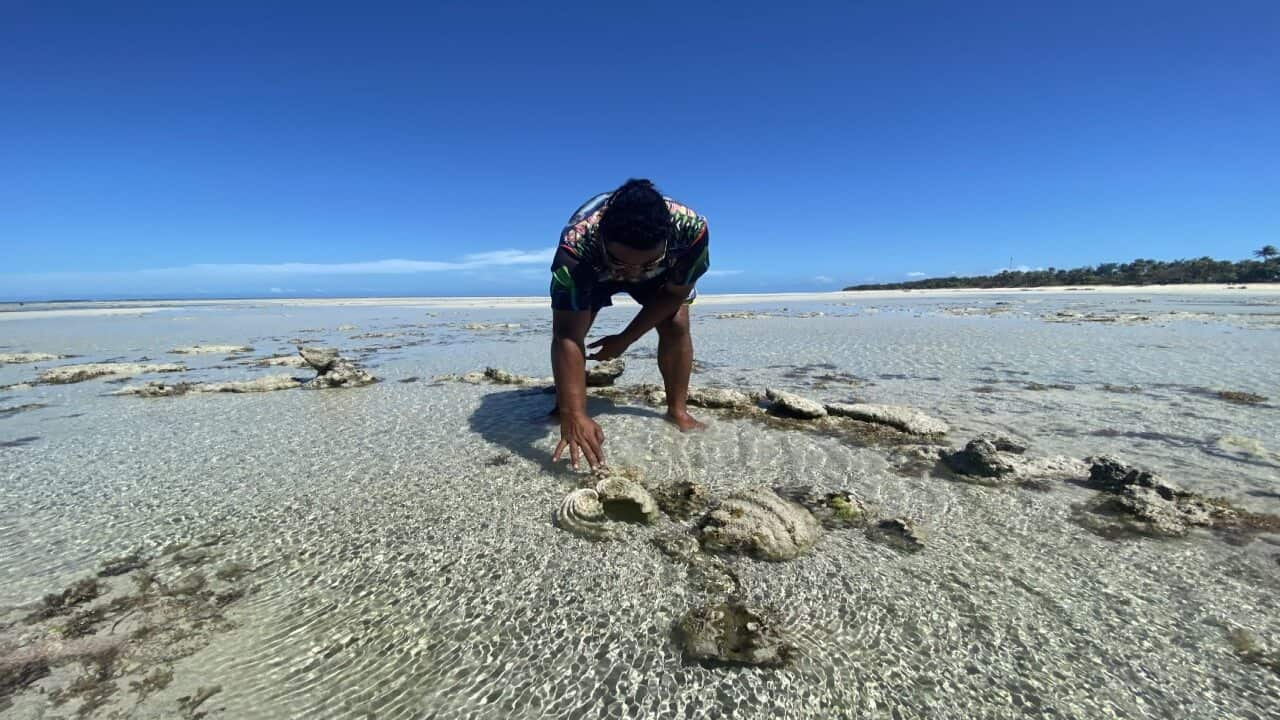When pakana man Andrew Gall discovered climate change could have a real impact on kanalaritja — the practice of shell stringing in lutruwita (Tasmania) — he wanted to use his skills to help.
His research found that if ocean temperatures continue to rise around lutruwita, the water can become acidic and cause sea shells used for kanalaritja to become thinner and more brittle.
It could also affect the kelp on which the sea shells grow.
So with permission and a set of pakana sea shells that he was gifted from the community, Mr Gall used 3D scanning, drawing and printing technology to recreate the shells.
He experimented with various types of resins and chemicals as part of his recent doctorate.
Mr Gall said the 3D-printed shells are not a replacement for the real thing, and are not yet at the precise detail he'd like them to be.
"We're not at 100 per cent. There's new technology that would make it unbelievable, but it's not accessible in Australia... we're about 85 per cent. The process is there now, but we're not quite there with the accuracy and the colour," he said.

Andrew's granddaughter Zyana showcases the 3D printed shells.
Secret, sacred, specialist
As kanalaritja is a sacred women's practice, Mr Gall could not embark on this journey without the women in his family.
While he had discussions with the pakana community, it was his daughter Alana Gall who met with senior shell stringers before going ahead with the project.
"It was imperative that my dad obtained permission to do this work from senior shell stringers. This is a very important aspect of cultural protocols," Ms Gall said.
"Kanalaritja is such an important and sacred practice, especially because of the connection that it brings between pakana women.
"So that going out on Country and collecting the shells, and then cleaning the shells and then stringing them together... it's that relationship building, that bonding."

Andrew and Alana Gall.
Preservation or prevention?
At first, some mob were hesitant towards the idea but saw why this kind of preservation work could be necessary, according to Mr Gall.
"Some were overjoyed by the idea of Dad's work, whereas others were understandably hesitant. One Aunty said she didn't 'believe in this' as 'we should be trying to fix our environment, so we can save our real shells.
"Once I explained that this wasn't about putting an end to mitigation efforts [but] that Dad's work is about developing an adaptation to climate change in case mitigation efforts failed, she saw the merit in the work."
Ms Gall also said the Elders were happy someone from their community "was working towards protecting kanalaritja if things didn't drastically change in the environment".

Inside Andrew Gall's doctoral exhibition which shows various prototypes of printed shells using different resins.
Preservation and adaption
Feedback from pakana shell stringers throughout the continuum of Mr Gall's doctoral practice was crucial.
He was able to ensure he was keeping in line with what they wanted and needed from the printed shells.
He had to make sure the shells were scanned perfectly, capturing their detail but also so that they could be hollow enough to be strung.
After creating successful prototypes, the kanalaritja could only take place amongst women.
"One day I was talking to my granddaughter Zyana about it and she says: 'Grandad, I can do this... I can string the necklace," said Mr Gall.
It was then Zyana revealed she had been taught by in a stringing workshop.

Lola Greeno (b.1946) black crows, blue gulls, penguins and oat shells Launceston 2016 Purchased TMAG Foundation 2016 Source: Supplied
"So we did, I got my granddaughter and daughter to string the necklaces. I wasn't allowed in there, which is sticking to the protocol."
Alana Gall said it was a special experience to do kanalaritja and to learn the technique from her daughter Zyana.
"She was able to teach me for the first time, as well as my niece, her cousin. So she taught both of us that, both pakana women who had never learned how to do shell stringing."

Zyana Gall stringing her work 'Coming Together'.
Sharing knowledge
Mr Gall hopes to keep on perfecting the 3D-printed shells and work more with community on preserving a database for kanalaritja, while his daughter said the work can be used to help other Indigenous communities facing the effects of climate change.
"Our communities are very vulnerable to the fact that climate change is happening, and they can't control that this is happening."
"So for them to be empowered to have some way to adapt to climate change, I think it's quite incredible."












